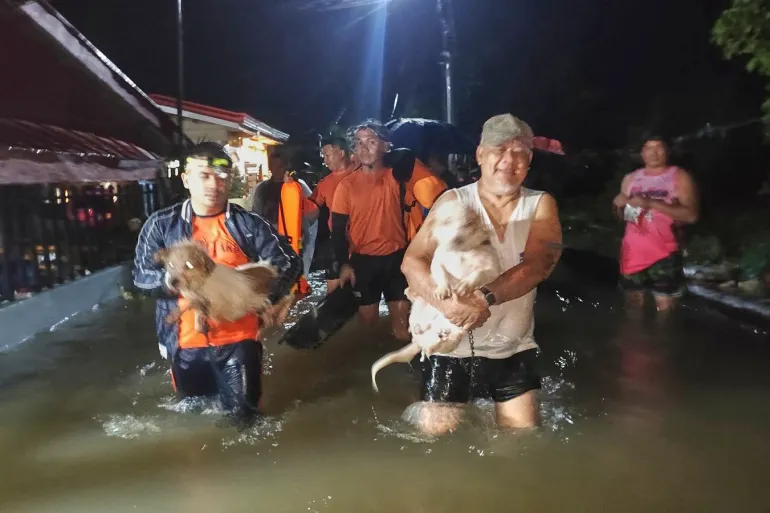A powerful tropical storm swept through the central Philippines, leaving at least four people dead and forcing the evacuation of nearly 400,000 residents. The storm, named Bualoi, is the 15th tropical cyclone to strike the country in 2025, and it struck just days after Super Typhoon Ragasa.
Bualoi made landfall in Eastern Samar with sustained winds estimated around 110 km/h. As it pushed inland, heavy rains triggered floods and mudslides, especially in the provinces of Masbate, Bicol, and parts of Southern Luzon. Rural communities and islands that are often vulnerable to storms were among the hardest hit.
In Masbate province, three people died after being struck by falling debris, a collapsed wall, and a lightning strike. Another fatality occurred in Camarines Norte. More than 73,000 people fled their homes in Eastern Samar and Northern Samar alone and are now sheltered in government evacuation centers. Across several islands, tens of thousands more have been displaced.
The storm knocked out power and damaged road and bridge infrastructure, leaving many areas inaccessible. Local leaders have called for urgent clearing operations to restore connectivity so that food, medicine, and health teams can reach isolated communities. Ports are being prioritized for reopening to enable delivery of aid.
Forecasters warn that Bualoi could regain strength as it moves toward Vietnam, posing further risks to coastal areas en route. Authorities remain on high alert for flash floods, landslides, and storm surges, especially in low lying or steep terrain.
Philippine officials say the timing of this storm—so close to Ragasa—has made the response and scale of humanitarian need much greater. Many communities are still recovering from earlier damage. With resource constraints, officials and aid agencies face difficult choices in where to focus relief.
This disaster underscores the vulnerability of the Philippines to successive storms and the importance of early warning, resilient infrastructure, and community preparedness. The coming days will test how fast relief reaches those in need and whether recovery can begin before the next storm strikes.


